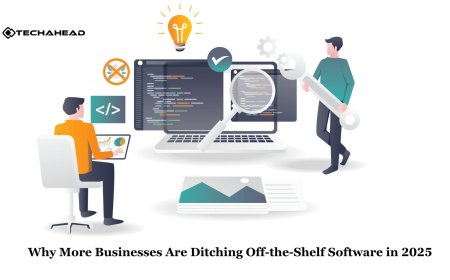Intelligence Engineered: Building Smarter Systems with AI
Intelligence Engineered: Building Smarter Systems with AI” explores how artificial intelligence is redefining the design and development of modern systems.

Were witnessing a major transformation in the way systems are designed. No longer static or rule-bound, todays most powerful technologies are engineered with intelligencelearning from data, adapting to change, and making decisions with minimal human input. This shift is more than just a technical upgrade; it's a reimagining of how we build, operate, and interact with digital systems.

In this article, we dive into the emerging world of AI-powered system designhow it works, where it's headed, and why it matters for the future of technology.
From Programming to Engineering Intelligence
Traditional systems rely on human-written code: predictable, rigid, and deterministic. But the world isnt predictable, and intelligent behavior cant always be programmed line-by-line. Thats where AI development comes in.
Instead of telling machines what to do in every situation, we build systems that can learn from data, recognize patterns, and optimize decisions based on real-world context. This process is not just codingits engineering intelligence into the fabric of technology.
Core Foundations of AI-Driven Systems
Building smarter systems with AI involves several key pillars:
1. Machine Learning (ML): The Learning Engine
ML enables systems to improve over time without being explicitly reprogrammed. These systems learn from historical data to make predictions or detect patterns. Common use cases include:
-
Fraud detection
-
Personalized recommendations
-
Predictive maintenance
-
Dynamic pricing
Modern frameworks like TensorFlow, PyTorch, and Scikit-learn make it easier for developers to implement powerful models for real-world applications.
2. Natural Language Processing (NLP): Understanding Human Language
NLP allows systems to interpret, process, and generate human language. From chatbots and voice assistants to automated summarization and document understanding, NLP powers the interface between humans and intelligent machines.
Advanced language models, such as GPT and BERT, are transforming how systems engage with usersunderstanding intent, generating responses, and adapting to context in real time.
3. Computer Vision: Seeing the World
Through deep learning and neural networks, AI systems can now see and understand visual inputsimages, video, and real-world environments.
Use cases include:
-
Facial recognition
-
Autonomous vehicles
-
Quality inspection in manufacturing
-
Augmented reality applications
Computer vision is especially critical in fields where visual data is abundant and human review is time-consuming or error-prone.
4. Autonomous Agents: Acting with Purpose
Intelligent agents combine learning, perception, and planning to act autonomously in dynamic environments. These agents can make decisions, navigate tasks, and optimize strategies based on goals.
Theyre used in:
-
Robotics and drones
-
Game AI
-
Virtual assistants
-
Business process automation
Engineering these agents requires a deep integration of ML models, rules-based logic, environmental sensing, and feedback loops.
Real-World Examples of Smarter Systems
AI is not just theoreticalits being embedded into systems we use every day.
Smart Healthcare
AI is revolutionizing diagnostics, treatment planning, and patient engagement. Systems now analyze X-rays, monitor vital signs in real time, and even assist in robotic surgery.
Example: An AI-powered radiology platform can detect anomalies in scans faster than traditional reviews, improving diagnosis accuracy and patient outcomes.
Next-Gen Finance
Banks and fintech firms are using AI for fraud detection, automated lending, and investment insights. Intelligent systems process millions of transactions in real-time, flagging suspicious patterns and personalizing financial advice.
Example: Robo-advisors use AI to manage portfolios based on market trends and user risk profilesoften outperforming human-managed funds.
Intelligent Manufacturing
AI systems in factories monitor machinery health, optimize energy consumption, and improve supply chain agility. Vision systems can detect defects with near-perfect accuracy.
Example: Predictive maintenance powered by AI helps manufacturers reduce downtime and extend equipment lifespansaving millions in costs.
Smarter Retail and Customer Service
From AI chatbots that resolve issues instantly to recommendation engines that tailor online shopping, AI enhances both customer experience and operational efficiency.
Example: E-commerce platforms use behavioral data and AI to optimize product suggestions, increasing engagement and conversion rates.
The Developers Role in Engineering Intelligence
Developers and engineers are the architects of this shift toward intelligent systems. Their role extends far beyond writing algorithmsthey must:
-
Curate and clean data for training
-
Build and train models for learning
-
Integrate AI into broader systems
-
Ensure reliability, scalability, and security
-
Design with ethical responsibility and transparency
Todays AI developers are also AI product designers, ethics consultants, and innovation leadersbecause every system they build will shape real-world outcomes.
Key Challenges in Building AI-Powered Systems
With great power comes great responsibility. Here are some challenges developers face when engineering intelligent systems:
1. Bias and Fairness
AI systems learn from dataand biased data leads to biased outcomes. Developers must actively work to detect and mitigate bias, especially in sensitive domains like hiring, healthcare, and law.
2. Transparency and Explainability
As models become more complex, they become harder to interpret. Users and stakeholders demand explainable AIsystems whose decisions can be understood and trusted.
3. Data Privacy and Security
Smart systems handle sensitive information. Developers must protect user data, implement strong encryption, and comply with regulations like GDPR.
4. Overreliance and Automation Risks
While AI enhances decision-making, over-dependence on AI can lead to dangerous blind spots. Human oversight remains essential, especially in critical systems like aviation, finance, and emergency response.
What the Future Holds
As intelligent systems mature, we can expect to see:
-
Self-improving agents that learn continuously and evolve autonomously
-
AI-native applications that are intelligent by design, not as an afterthought
-
Smarter infrastructures, from cities to factories, powered by predictive AI
-
Cognitive collaboration between humans and machines in every field
Eventually, intelligent systems will become as fundamental as electricity or the internetpowering everything from personal tools to planetary-scale infrastructure.
Final Thoughts
Intelligence Engineered is not a sloganits a new reality. We are entering an era where systems are no longer just functional, but thoughtful. They dont just follow instructions; they interpret, learn, and adapt. This leap forward is changing the way we build and interact with technology.
For developers, innovators, and organizations, the message is clear: the future belongs to those who can engineer intelligence into everything they create.
Now is the time to build smarter.






































